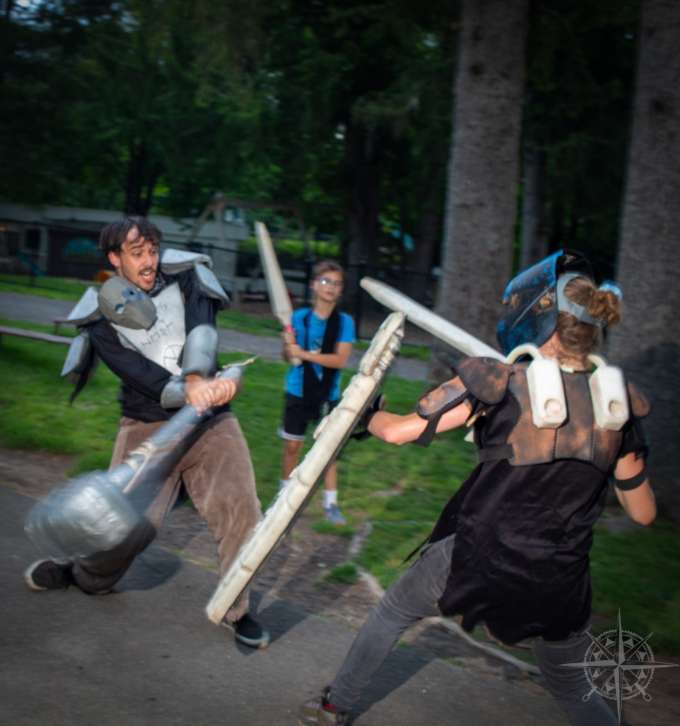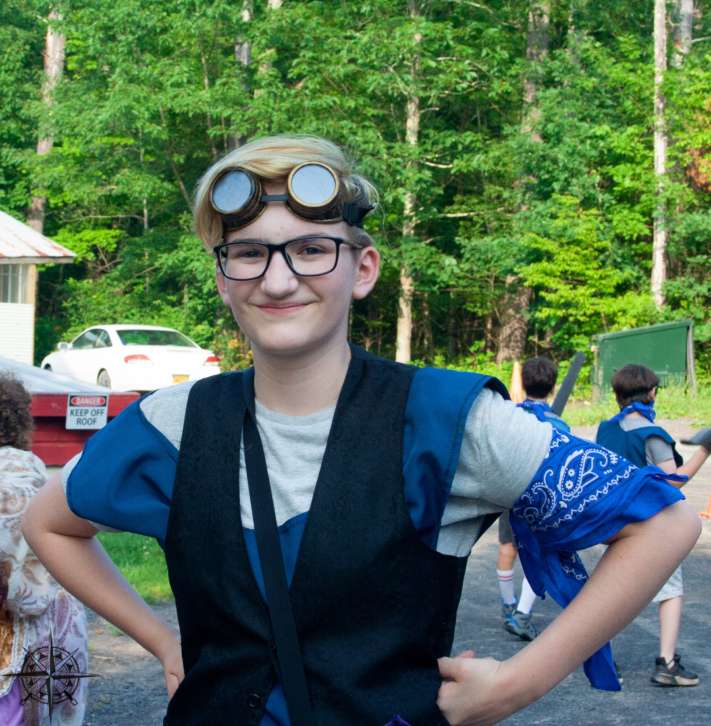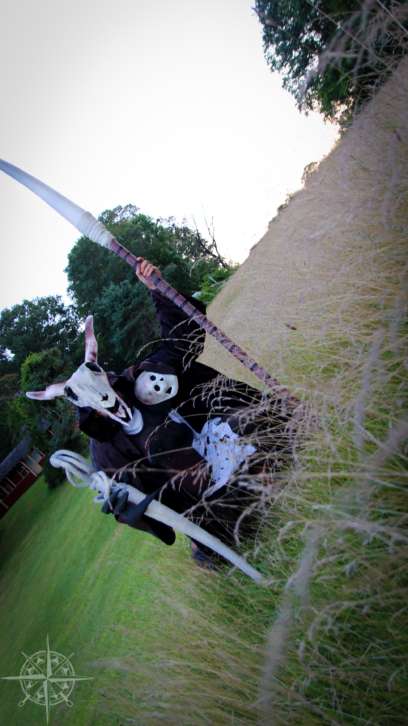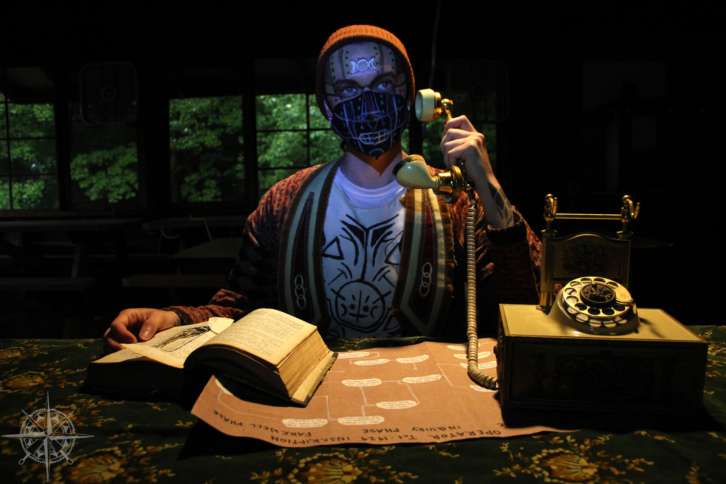New blog post: What’s the Word?
What’s the Word?: Using Verbs to Make Better Flow Points
Written by Milo Duclayan 5/2024
Imagine you’ve just written your first adventure game. The world is awesome, the characters are unique, the lists are gorgeous, and the flow is… well, the flow is written, to some extent. You know what you want the story to look like and some major plot points, sure, but there’s a problem: the gameplay is just not engaging.
 Gameplay and story are two very different things. The story is like a bird’s eye view of the entire game: it covers the themes and the aesthetic and the mission statement, as well as the plot at large. The gameplay is on the ground: the things that the players are actually experiencing and doing from moment to moment – the individual flow points. If the story is like looking at a forest, the gameplay is looking at each tree and seeing how it aligns with the rest.
Gameplay and story are two very different things. The story is like a bird’s eye view of the entire game: it covers the themes and the aesthetic and the mission statement, as well as the plot at large. The gameplay is on the ground: the things that the players are actually experiencing and doing from moment to moment – the individual flow points. If the story is like looking at a forest, the gameplay is looking at each tree and seeing how it aligns with the rest.
So, your story is good, but your gameplay is struggling. You have your flow structure (see “Flows for Algernon” elsewhere on the blog for more details), but you’re struggling to make the flow points themselves interesting enough. My solution? Verbs.
This article is going to cover two things: what verbs are (in game design) and why they’re a useful framing device for your flow points, and a quick exercise that you can use to practice with verbs and get more creative with your flow.
First, what the heck is a Verb?
The verb of a flow point is the main action that player characters will be engaging with. Every flow point needs a verb, and most flow points already have them, even if you haven’t noticed it.
Here’s a quick example flow point: The PCs battle through a horde of angry skeletons.
The verb here is actually already in the sentence: “Battle”. “Battle”, “Fight”, and “Kill” (and other verbs along those lines) are some of the most common verbs in adventure games. Other common verbs are things like “Fetch/Collect/Retrieve/Get” or “Talk/Listen/Learn”.
Now, there’s nothing inherently wrong with those verbs. They’re common for a reason. But because they’re so common, it’s very easy to end up with a game full of them, and a game full of the same verbs gets repetitive fast.
The Exercise – Verbing your Flow
Here’s the exercise. This won’t give you a perfect flow point, but it’ll really help you kickstart your brain into thinking differently about how they tick in a helpful way.
Head to google and find yourself a Random Verb Generator. Try not to have any story in mind when you start this exercise, just be open to all possibilities. When you’re ready, roll yourself a random verb.
Now, take no more than 10 minutes, and make a flow point that uses that verb as its core action. I’ll do one alongside you so you can have some reference. Here’s the verb I’ve rolled: “Heat”.
When you roll for random verbs, you will get some very weird ones. At first it might be hard for you to imagine how you could make them into a flow point, but that’s why we’re doing this. The more you find ways to fit weird verbs into flow points in practice, the more unique and engaging your real flows will start to become. The easiest way I’ve found to start building a flow point is to define some or all of its five W’s (and H): Who, What, When, Where, Why (and How).
So, I need to make a flow point around the verb “Heat”. I can start by thinking about what they might be heating – let’s go with a furnace for an engine. Next I need to decide how they go about doing that action – maybe they have to take turns pumping a set of bellows. Lastly, the consequence – why the players are doing this flow point – if they don’t keep heating this engine, their friends inside the building will freeze. I’m missing the Who, When, and Where, but I think this is enough to give myself a solid idea of the flow point.
Done! Alright. Is this a good flow point for a game? Probably not. But it doesn’t have to be. The goal of this exercise isn’t to make perfect flow points – it’s to get you comfortable with using unusual actions, and finding more creative ways for your players to play your game (and also teach you some new verbs! You never know when a verb might come in handy). You can translate this skill into your real games, too.
Making verbs work for your game – Foundations
 The reason this is an exercise and not something you can use for every adventure game is that some verbs just aren’t good fits. We write games for our players, so when we come up with the verbs that we’re actually going to use for our game, there are a few extra things we need to consider. These can be broken down into three main categories: empowerment, diversity, and mission. The first two are more foundational so we’ll do those first, and we’ll get to mission a bit later.
The reason this is an exercise and not something you can use for every adventure game is that some verbs just aren’t good fits. We write games for our players, so when we come up with the verbs that we’re actually going to use for our game, there are a few extra things we need to consider. These can be broken down into three main categories: empowerment, diversity, and mission. The first two are more foundational so we’ll do those first, and we’ll get to mission a bit later.
Empowerment is something that we often talk about in a vague way, but using verbs to define our flow points can make things much clearer. Empowerment is all about choosing engaging verbs, things that will give our players strong, active emotions. Active is an important word here, because verbs that let the players be active participants will almost always make for stronger flow points than passive verbs. Listen is a much less engaging verb than Talk. This is often the make-or-break for beginning game writers, and it’s one of the first things we look for when picking games to run for the summer. If your game is full of inactive verbs, you are relying on the players to make their own fun – and while they certainly can and will, it’s always better for them to have an engaging game to build on.
In addition to being active, your verbs should also be chosen with intent. While verbs like “Fight” and “Talk” are useful, they’re often used as a backup for when a writer isn’t sure what they want out of a flow point. When you decide what verbs you’re going to use for a scene, try to keep in mind the actual goals of that scene, not just in terms of the story and plot, but in terms of what emotions and challenges you want the players to experience. If that happens to be a fight, great – but choose all of your verbs with intent, and the players will feel it.
Diversity of verbs is another key thing you need to consider when you’re making the verbs for your game. Diverse games have two main things: wide ranges of verbs across the entire experience, and original verbs to create unique experiences. A diverse game will feel completely different to the players than any other game they’ve played, and will keep them engaged all the way through.
When considering the diversity of verbs in a game, the top priority is to make sure that your game as a whole has a wide range of verbs. This is another one of those key issues for early writers, but the reasoning is pretty simple: having flow points with different types of verbs available at the same time during your game will give everyone a chance to do something that they’ll enjoy. A game shouldn’t be all fight and fight-related verbs, because some players just don’t like fighting. A lack of diversity of flow points can often be hard to recognize when you’re writing a game without guidance, but being able to condense the experience of each flow point down to a verb makes it much easier to recognize and resolve.
After you’ve built a diverse foundation of verbs across the entire game, there’s the more advanced problem of common verbs. Your PCs have likely played tons of games filled with verbs like “fight”, “get”, or “talk”. It’s fine to have some of these verbs, and it’s often necessary to have some or all of them in some parts of your flow. Once you’ve learned the foundations, though, being able to find creative and unique verbs for your flow points can really help elevate your game to a whole new level. These flow points tend to be the most memorable, the things that people think about long after the game is over. That being said, creativity of verbs can’t come before the player experience. It won’t matter how unique your flow is if your players aren’t feeling empowered and engaged.
Making verbs work for your game – Putting it into Practice
 In a game I ran back in 2022 called Tales of Anywhere, I had a series of flow points where the PCs needed to retrieve powerful relics from the gods of the world. While I could’ve just used the verb “Get” for all of those flow points, that would’ve meant having players do a really similar thing three times in a row. Instead, the verbs I used for those scenes were “Trick”, “Sneak”, and “Die”. These are all methods of achieving the same thing, but the core action is entirely different and way more engaging. In the “Trick” scene, the PCs went to a powerful god to get the artifact from them directly. This could have easily just used the verb “talk”, but remember, it’s always better to use active, intentional verbs when possible. Instead of just having a conversation and then giving the players the object, the players needed to actively trick the god into giving it to them, making it a much more empowering scene. Also notice that while the end goal is the same, each of these verbs is very different: “sneak” is more combat-oriented, “trick” is a social challenge, and “die” is a roleplay-heavy scene. Because of this, players have plenty of variety in the experiences they can choose from.
In a game I ran back in 2022 called Tales of Anywhere, I had a series of flow points where the PCs needed to retrieve powerful relics from the gods of the world. While I could’ve just used the verb “Get” for all of those flow points, that would’ve meant having players do a really similar thing three times in a row. Instead, the verbs I used for those scenes were “Trick”, “Sneak”, and “Die”. These are all methods of achieving the same thing, but the core action is entirely different and way more engaging. In the “Trick” scene, the PCs went to a powerful god to get the artifact from them directly. This could have easily just used the verb “talk”, but remember, it’s always better to use active, intentional verbs when possible. Instead of just having a conversation and then giving the players the object, the players needed to actively trick the god into giving it to them, making it a much more empowering scene. Also notice that while the end goal is the same, each of these verbs is very different: “sneak” is more combat-oriented, “trick” is a social challenge, and “die” is a roleplay-heavy scene. Because of this, players have plenty of variety in the experiences they can choose from.
Here’s another one: in Jay Dragon’s 2016 game The Horned King, there were a series of boss battles – it would be really easy to call these “fights”, but again, that would be exhausting to do over and over again. Instead, each boss battle had a different verb that made them feel really unique – Chase, Defend, Survive, Deceive, etc. This made the entire game feel incredibly dynamic, while still getting to keep the ‘boss rush’ style of flow.
The Mission Statement is something that Jay talked about in their article Drawn with Courage, which you can find earlier on the Story Board blog. At its core, the mission statements are like the overarching verbs of the entire game. In that article, referencing The Horned King, Jay uses the mission statements “Participating in the Ritual, Preparing Tactics and Executing Them, Feeling Unsure and Betrayed, and Fearing the Horned King” to describe the game’s core actions. Each of the verbs you choose for your flow points should support one (or better, multiple) of your mission statements. If your game is about glorious combat, choose verbs for your flow points that are powerful and combative. If your game is about dying in the darkness, choose verbs about running, hiding, and sacrificing. This won’t be the thing that makes a game unable to run, but making sure all of your verbs align with your mission can really help push the cohesion of the game to a new level.
Connecting verbs to your mission statement is also a great time to make use of unique game systems and mechanics. If you have a verb you plan to use often in your flow but you don’t think there’s a way to do it with the standard Wayfinder magic system, you can make one of your own. In Tales of Anywhere, I wanted “forgetting” to be a core verb of the game. There’s no memory mechanic in the Wayfinder magic system, so I made my own – for each second a certain monster was touching you, you’d forget a year of your life. Then I tied this mechanic into a bunch of my flow points where I wanted “forgetting” to be the verb. Just remember not to make too many new mechanics or you risk diluting your theme, or worse, ending up with a bunch of confused players.
Here’s a little bonus trick to wrap things up: you can do this exercise in reverse, too! Take any set of flow points that you’ve already written, and take a minute to try and break down what the core verbs of those flow points are. This can help you get a better idea of what your own game will actually look and feel like from the ground. It can also help you see where you’re starting to fall into the traps I mentioned above, like if you have a bunch of “fight” flow points in a row, or too few unique verbs, or your verbs just aren’t active enough.
If you look at a flow point and you can’t actually find any core verb for the PCs, that’s something to fix too – chances are you accidentally focused too hard on what’s happening with the SPCs or overall plot, and the actual actions of the players slipped away.
Conclusion
 Verbs are an incredibly useful tool to have in your toolbox, and they’re big all over the world of game design for a very good reason. Even if you never end up using the exercise or breaking down your previous flow points, understanding that the core of your game is player action can help you hone in on what will make your game genuinely fun to play. The point of verbs is to remember that the game, at its core, is all about what the players are doing – you can make the most beautiful sets and the best story ever, but at the end of the day, the players will experience what they do above all else.
Verbs are an incredibly useful tool to have in your toolbox, and they’re big all over the world of game design for a very good reason. Even if you never end up using the exercise or breaking down your previous flow points, understanding that the core of your game is player action can help you hone in on what will make your game genuinely fun to play. The point of verbs is to remember that the game, at its core, is all about what the players are doing – you can make the most beautiful sets and the best story ever, but at the end of the day, the players will experience what they do above all else.
For me, there are two key takeaways from these exercises with verbs. First, you need to make sure that your verb foundations are solid before you start getting fancy with it – lock down your active verbs and make sure your game has a wide range of action types before you start messing with anything else. Second, when you are ready to start getting funky with your verbs, have fun with it! Trust your instincts, and let your creativity flow. Believe me, your game will thank you for it.
Written by Milo Duclayan 5/2024
